Imagine a world where giant cats with enormous, curved fangs roamed the plains and forests, commanding awe and fear. The Smilodon—often called the saber-tooth tiger—was once the king of Ice Age predators. With its haunting gaze and impressive teeth, this legendary feline has left an imprint on our imagination. But how did such a magnificent creature vanish forever? Let’s step into the ancient world of the saber-tooth and discover the secrets behind its mysterious disappearance.
Majestic Appearance: The Saber-Tooth’s Signature Smile

Smilodon’s most iconic trait was undoubtedly its enormous, saber-like canine teeth, stretching up to an astonishing seven inches in length. But these fearsome fangs were more than mere tools—they were a symbol of this predator’s unique identity, making it one of the most recognizable creatures in the fossil record. Coupled with its powerful, stocky frame and broad chest, Smilodon commanded both fear and fascination, embodying the raw strength and specialized design of a top Ice Age hunter.
A Cat Like No Other: Unique Build and Strength
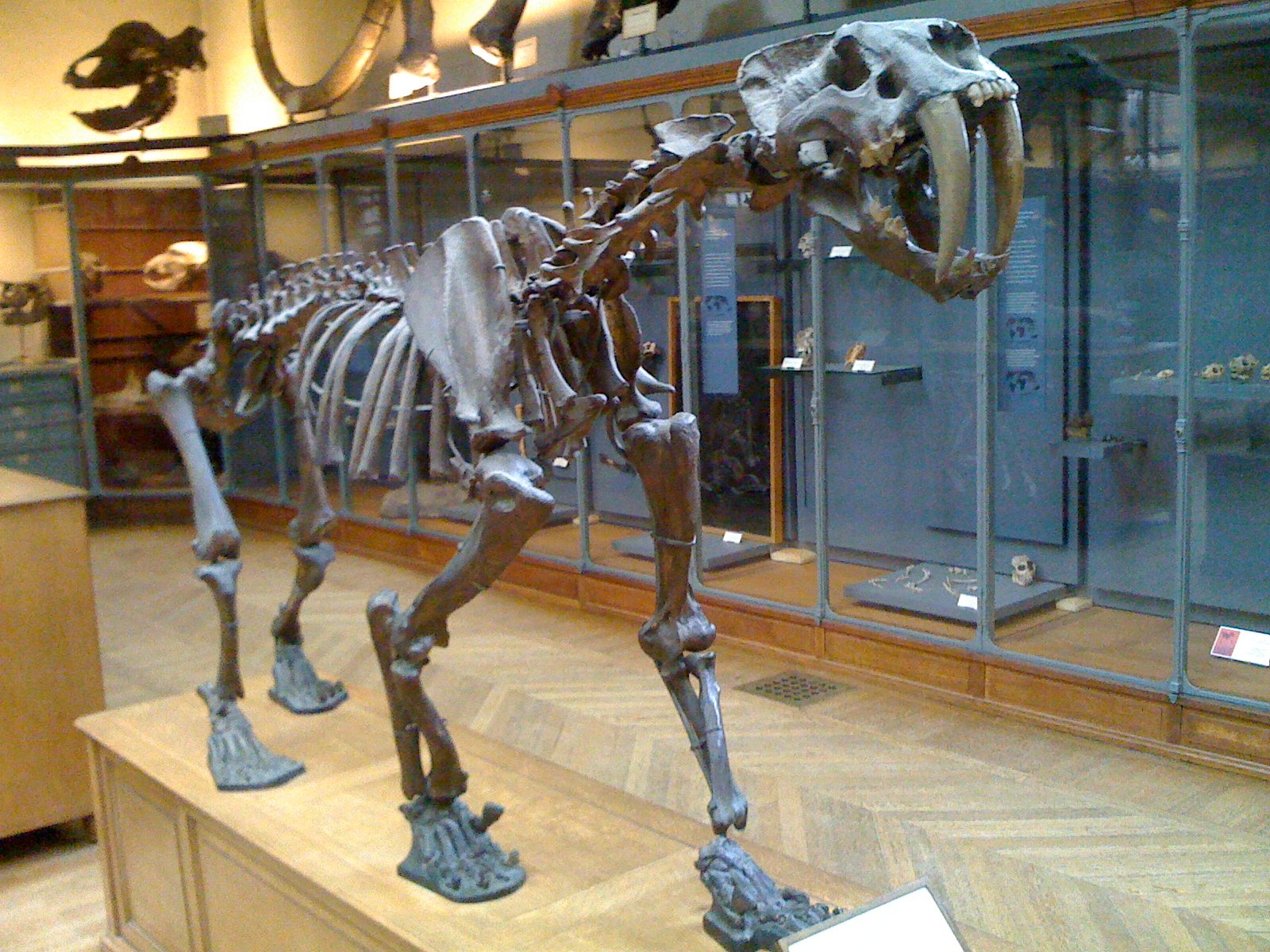
Unlike the sleek, long-legged hunters we see today, Smilodon boasted short, muscular limbs and a deep, barrel-shaped chest—an anatomy designed for brute force rather than high-speed pursuits. This build made it an expert ambush predator, capable of explosive power when it mattered most. Picture a heavyweight wrestler taking down an opponent with sheer strength, not a sprinter chasing prey across the plains. Smilodon thrived by closing in quietly and then grappling its quarry in a sudden, devastating assault.
Ancient Landscapes: Smilodon’s Wild Home

Smilodon once prowled expansive grasslands, sparse forests, and the chilly fringes of Ice Age tundra throughout the Americas. These dynamic landscapes were alive with colossal creatures—mammoths, towering bison, and herds of ancient camels—providing both opportunity and challenge. In such a world, every shadow held a story of predator and prey, and every day was a contest for survival. The very fabric of these ancient ecosystems was woven by the constant dance of life and death.
Mystery of the Fangs: What Were They For?

Those legendary teeth were far more than an intimidating display. Paleontologists believe Smilodon wielded them with surgical precision, targeting the soft throats of massive prey to deliver swift, fatal bites. Picture the audacity of taking down a towering mammoth or a brawny bison—those saber-like canines transformed this cat into an apex predator of extraordinary skill. In the theater of the Ice Age, Smilodon’s fangs were both its signature and its most formidable weapon.
Pack Hunter or Lone Predator? The Debate

Did Smilodon hunt alone, or did it prowl in coordinated groups like modern lions? Fossil evidence of multiple individuals found together hints at the possibility of teamwork, a necessity when facing towering mammoths or colossal bison. Yet some experts argue they were solitary ambush predators, relying on stealth and power. For now, the answer remains locked within ancient bones, leaving us to wonder about the social lives of these formidable cats.nes.
Family Bonds: Clues from the Bones
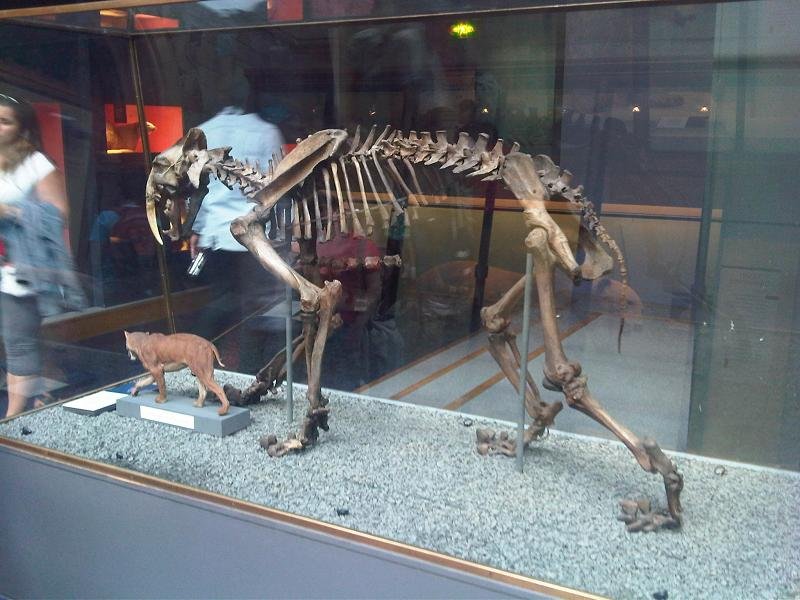
Remarkably, numerous Smilodon skeletons bear signs of healed fractures and injuries, revealing that these mighty cats often survived wounds that would have been fatal without support. Such evidence hints at a social side to Smilodon, suggesting they may have cared for injured companions or maintained close-knit groups. This possibility challenges the classic image of Smilodon as a solitary hunter, painting a more complex picture of empathy and cooperation. In these ancient bones, we glimpse a community that defied the harshness of their world together.
The Roar of the Ice Age: Smilodon’s Era

Living during the Pleistocene epoch, Smilodon prowled a breathtaking world filled with mammoths, towering giant sloths, and cunning dire wolves. It was truly an age of giants, where survival hinged on strength, strategy, and sometimes sheer luck. Amid this raw struggle for life, the saber-tooth stood out as an unrivaled symbol of power and ferocity. Its presence captured the very spirit of a wild, untamed Earth, where every heartbeat echoed with the promise—and peril—of the hunt.
Battle Scars: Life Wasn’t Easy
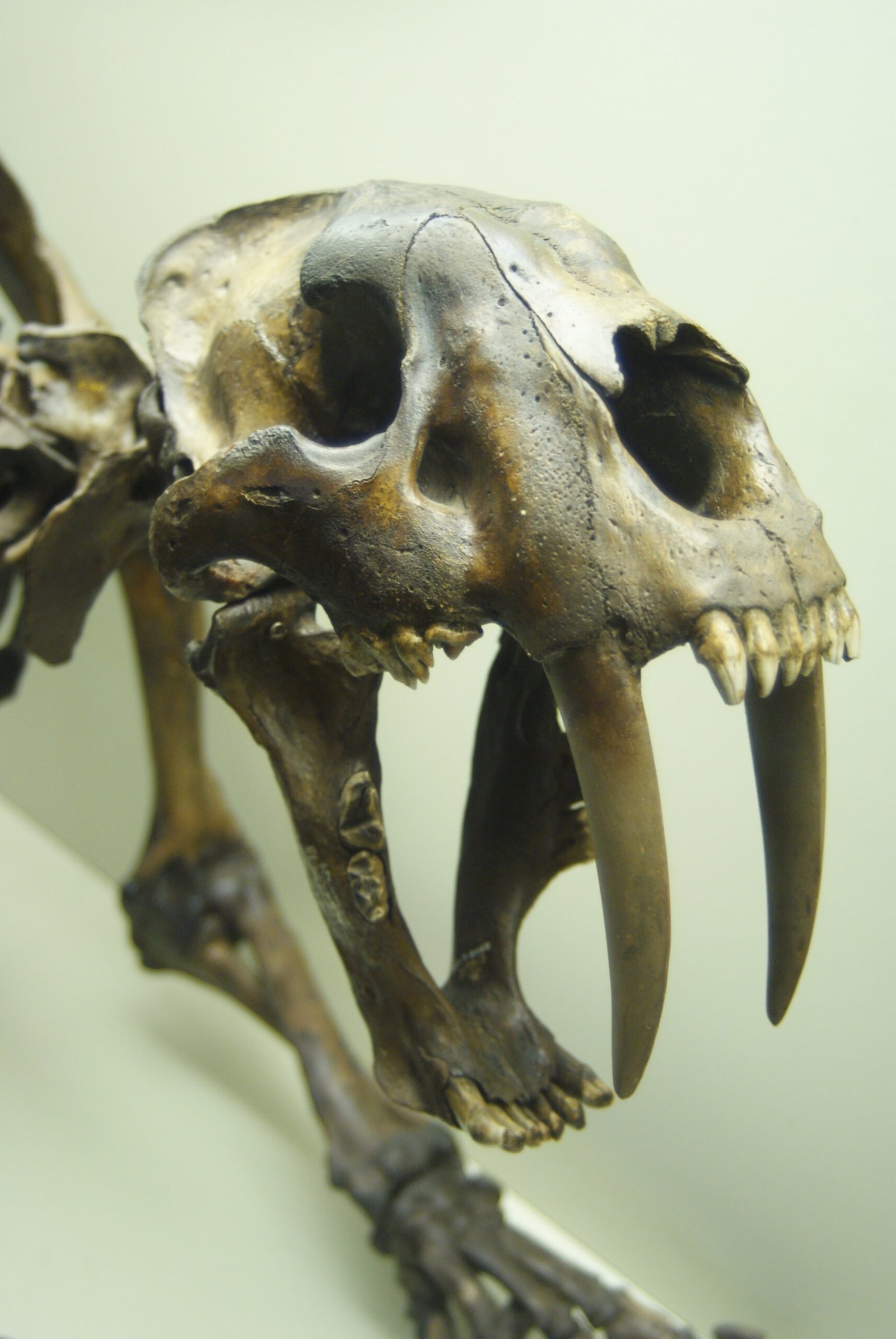
Fossils often reveal broken bones and healed wounds, vivid proof that Smilodon’s life was anything but easy. Each fracture and scar tells a story of fierce hunts, brutal battles with rivals, or desperate struggles to survive. These injuries were more than mere damage—they were badges of resilience, hard-won marks of a predator that faced danger head-on. In these silent records, we glimpse the raw, relentless challenges that shaped this formidable cat’s existence.
The Final Chill: Facing the Ice Age’s End

As the last Ice Age drew to a close, the climate underwent dramatic upheavals, reshaping entire ecosystems. Forests receded, grasslands thinned, and with them vanished the colossal mammals that Smilodon relied upon for survival. This shifting world left the saber-tooth increasingly out of step with its environment. In the end, the changing landscape sealed the fate of this magnificent predator, reminding us how even the mightiest can fall to the quiet force of time.
Human Encounters: A Deadly Rivalry

When early humans stepped into Smilodon’s realm, they brought more than just curiosity—they arrived armed with tools, strategies, and teamwork that revolutionized hunting. This new competitor didn’t just share the same prey; it may have actively driven Smilodon off kills or even targeted the cats themselves. Some researchers argue that this human pressure, combined with a changing climate, was a one-two punch that pushed the saber-tooth toward extinction. It’s a haunting reminder of how our ancestors shaped the fate of even the fiercest predators.
Vanishing Giants: The Prey Disappeared First

When mammoths, giant bison, and other towering megafauna began to vanish, Smilodon faced an unforgiving reality—its primary food sources were slipping away. This triggered a devastating chain reaction: without ample prey to sustain them, these powerful cats struggled to survive. In a world rapidly losing its giants, the fate of Smilodon was sealed by the disappearance of the very creatures it once ruled over. It’s a sobering testament to how deeply interconnected all life truly is.
Frozen in Time: The La Brea Tar Pits

Countless Smilodon fossils have been unearthed from the dark, sticky depths of Los Angeles’ La Brea Tar Pits, where these natural traps ensnared predators drawn by the cries of stuck prey. Over thousands of years, the tar preserved their bones in haunting detail, capturing moments of desperation and survival frozen in time. Each skeleton tells a silent story of struggle, ambush, and the perils of an unforgiving world. Thanks to these eerie graveyards, we can peer back into the lost realm of the saber-tooth and uncover secrets long buried.
Big Teeth, Big Problems: The Downside of Specialization
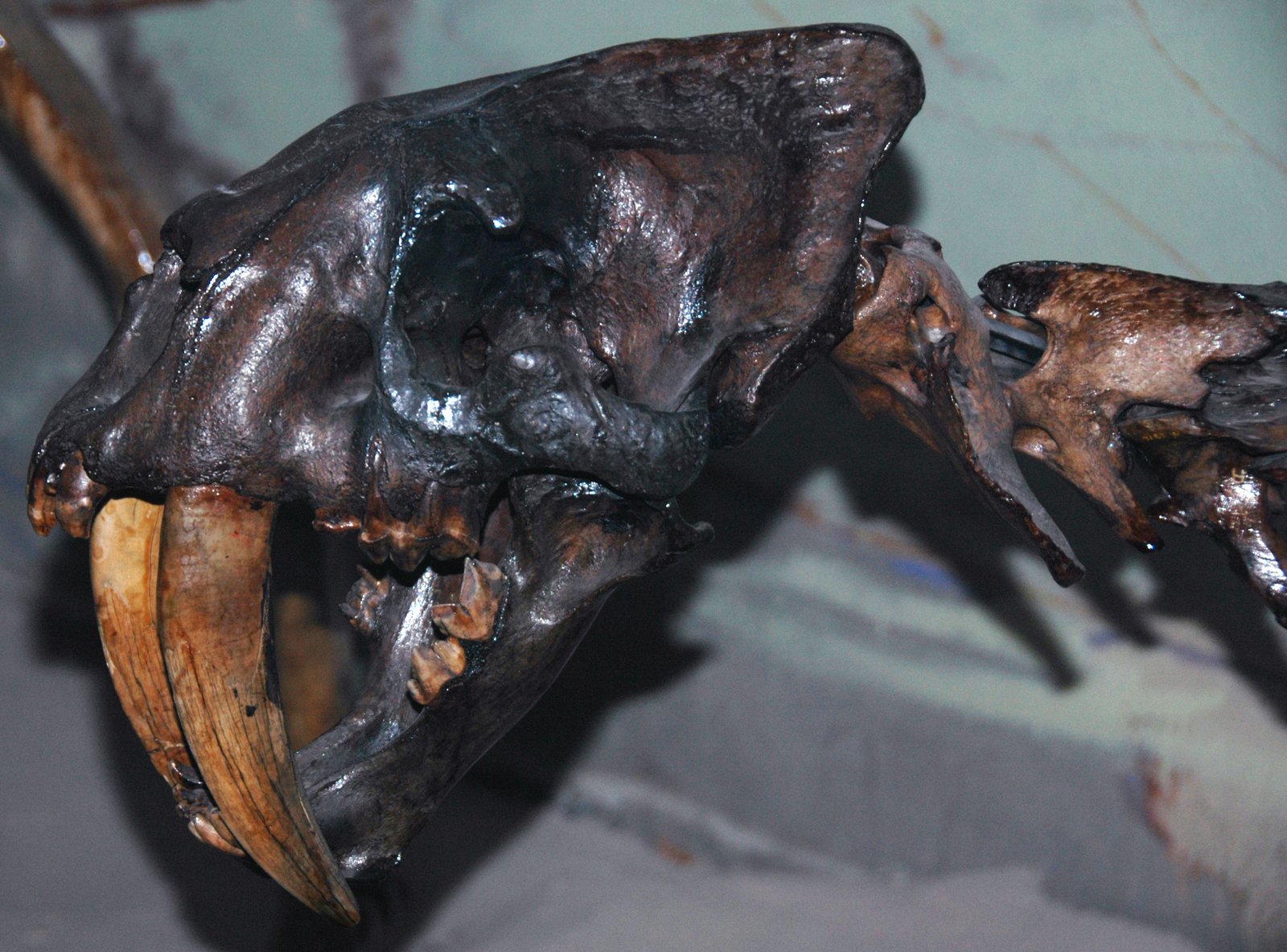
Smilodon’s enormous saber-like fangs were brilliantly adapted for dispatching massive prey, but that specialization came at a steep price. When the great herds of mammoths, bison, and giant sloths dwindled, these mighty cats found themselves ill-equipped to hunt smaller, quicker animals. Their powerful jaws and fragile teeth weren’t designed for chasing or catching nimble game. In the end, being such a finely tuned predator in a changing world may have been exactly what led to their downfall.
Weathering the Storm: Climate’s Cruel Hand

The end of the Ice Age didn’t just mean rising temperatures—it unleashed a cascade of unpredictable weather, frequent droughts, and landscapes in constant flux. Grasslands shrank, forests shifted, and the stable hunting grounds Smilodon once relied on began to vanish. Their icy, prey-rich world was quite literally melting beneath their paws. In this new, uncertain environment, survival became a far greater challenge than ever before.
Heart of a Hunter: The Emotional Toll

Picture a hungry Smilodon prowling a barren landscape, muscles tense, eyes scanning for prey that no longer comes. The emptiness wasn’t just of the stomach—it was a haunting loneliness as the great herds that once thundered across the plains disappeared. Each fruitless hunt must have brought not only physical exhaustion but a deep, instinctual despair. In those final days, the struggle for survival was as much an emotional battle as it was a fight against hunger.
The Legacy of Fear and Awe

Even in death, Smilodon continues to stir both awe and primal fear. Its powerful form has been etched into cave walls and woven into ancient myths, echoing the wonder and terror felt by the first humans who encountered it. The mere silhouette of those towering fangs is enough to ignite our imaginations centuries later. Few creatures have stalked so vividly through both our collective memory and our darkest dreams as the mighty saber-tooth.
Nature’s Balance: When Predators Disappear

The disappearance of Smilodon is a haunting reminder of how delicate nature’s balance truly is. When such formidable predators vanish, the entire web of life feels the impact, rippling through prey populations and altering landscapes. The loss of the saber-tooth was far more than the end of a single majestic species—it was a profound shift in the heartbeat of the ecosystem. It teaches us that when giants fall, the world itself changes in ways we are only beginning to understand.
Feline Emotions: Did Smilodon Feel?

Though we can’t peer directly into Smilodon’s mind, glimpses from their modern cousins—lions, tigers, and leopards—offer tantalizing clues. Today’s big cats display a tapestry of emotions: affection for family, rage in battle, even signs of jealousy and mourning. It’s easy to imagine that Smilodon, too, experienced a world colored by deep feelings. Their ancient hearts likely beat with the same passions that stir the great cats of our time.
A Cat’s Whisper in the Wind: The Echoes Today

Stroll through a quiet forest or across an open plain today, and you might sense shadows of the past moving alongside you. Though Smilodon itself is long gone, its legacy lives on in the silent grace and piercing eyes of modern wild cats. Each rustle in the grass or fleeting shape among the trees is a whisper of that fierce, ancient beauty. In this way, the spirit of the saber-tooth still prowls our world, haunting it with memories of a wilder time..
Lessons Learned: Conservation Today

Smilodon’s story stands as a vivid warning of the consequences when habitats shrink and prey disappears. Today, countless wild cats tread a similar perilous path, threatened by deforestation, climate change, and human encroachment. Their future depends on whether we heed these ancient lessons and work to safeguard the delicate balance of nature. By acting now, we honor the past and give today’s majestic predators a fighting chance to survive.
Inspired by the Past: Modern Feline Champions

Today’s big cats—majestic tigers, lions, leopards, and more—carry the living legacy of their formidable saber-toothed ancestors. Their daily fights for territory and prey mirror the timeless struggles Smilodon once faced. By supporting conservation efforts, we not only protect these modern guardians of the wild but also keep the spirit of ancient predators alive. In doing so, we help ensure their stories don’t end in silence, as Smilodon’s once did.
Childhood Fascination: Saber-Tooth in Our Imagination

For countless people, the saber-tooth is the very first prehistoric creature to capture the imagination—an icon of mystery, danger, and raw beauty. Its fearsome fangs and powerful form ignite a fascination that crosses ages and cultures. Museums, documentaries, and storybooks keep its legend vividly alive, ensuring that the awe it inspires never fades. In this way, Smilodon continues to spark curiosity and wonder in every new generation that encounters its timeless story.
Hope in the Bones: What Fossils Teach Us
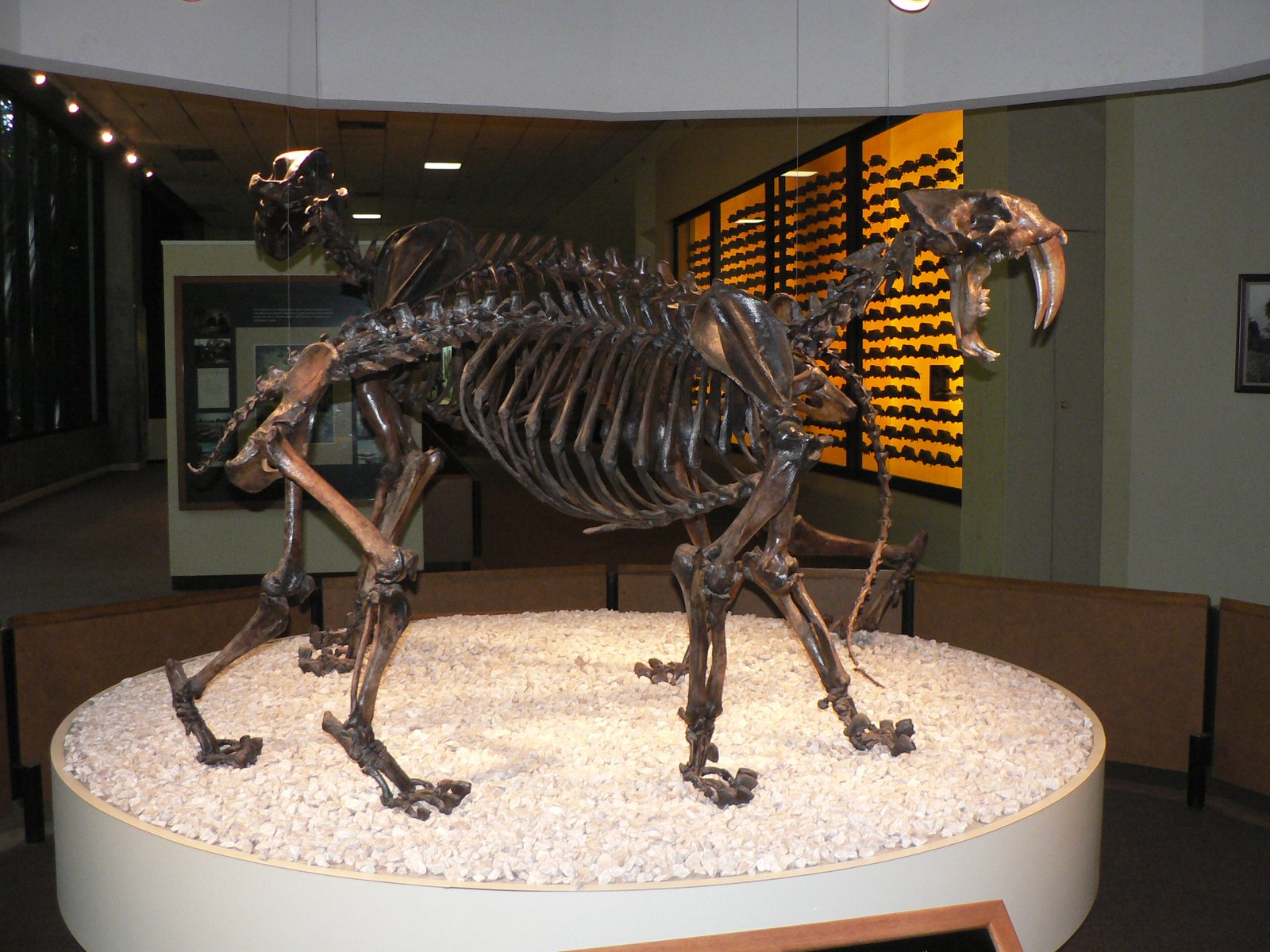
Every fossil pulled from the earth offers fresh insight into Smilodon’s mysterious life and the wild world it once ruled. These ancient bones are far more than silent relics—they’re powerful messages from a vanished age, whispering lessons across time. They remind us how quickly even the mightiest can disappear. In their silent testimony, they call on us to safeguard the incredible creatures that still roam our planet today.
A Final Glance: The Beauty of What Was Lost

There’s a haunting, bittersweet beauty woven through the tale of the saber-tooth. Its disappearance stands as a powerful reminder to treasure the wild marvels that still grace our world. The ghostly echo of Smilodon’s roar calls out across the ages, urging us to remember, to care deeply, and to protect every living feline that prowls our planet today. In honoring their memory, we safeguard the future of nature’s fiercest wonders.
End.

Suhail Ahmed is a passionate digital professional and nature enthusiast with over 8 years of experience in content strategy, SEO, web development, and digital operations. Alongside his freelance journey, Suhail actively contributes to nature and wildlife platforms like Feline Fam, where he channels his curiosity for the Feline into engaging, educational storytelling.
With a strong background in managing digital ecosystems — from ecommerce stores and WordPress websites to social media and automation — Suhail merges technical precision with creative insight. His content reflects a rare balance: SEO-friendly yet deeply human, data-informed yet emotionally resonant.
Driven by a love for discovery and storytelling, Suhail believes in using digital platforms to amplify causes that matter — especially those protecting Earth’s biodiversity and inspiring sustainable living. Whether he’s managing online projects or crafting wildlife content, his goal remains the same: to inform, inspire, and leave a positive digital footprint.






